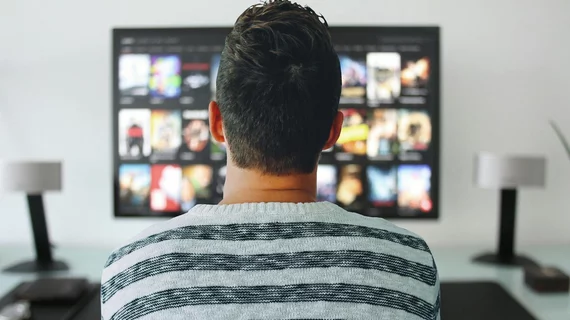In case there was any doubt, streaming an entire season of your favorite show in one sitting may not be good for your health.
In fact, according to a new study published in the European Journal of Preventive Cardiology, regularly watching four hours or more of TV in a single day is associated with a much higher risk of venous thromboembolism (VTE).
The study’s authors examined data from three different studies and more than 131,000 participants. All participants were 40 years old or older with no prior history of VTE. TV habits were tracked using questionnaires. The average follow-up time in the three studies ranged from five years to nearly 20 years.
Overall, the group found, watching TV at least four hours per day was associated with a 35% higher risk of VTE.
“Prolonged TV viewing involves immobilization, which is a risk factor for VTE,” lead author Setor Kunutsor, BSc, MBChB, MPhil, PhD, of the University of Bristol in the U.K., said in a statement. “This is why people are encouraged to move around after surgery or during a long-haul flight. In addition, when you sit in a cramped position for long periods, blood pools in your extremities rather than circulating and this can cause blood clots. Finally, binge-watchers tend to eat unhealthy snacks which may lead to obesity and high blood pressure which both raise the likelihood of blood clots.”
Kunutsor also noted that these findings should be kept in mind when it comes to sedentary activities other than TV.
“Generally speaking, if you sit a lot in your daily life—for example your work involves sitting for hours at a computer—be sure to get up and move around from time to time,” he said.
The full study is available here.

